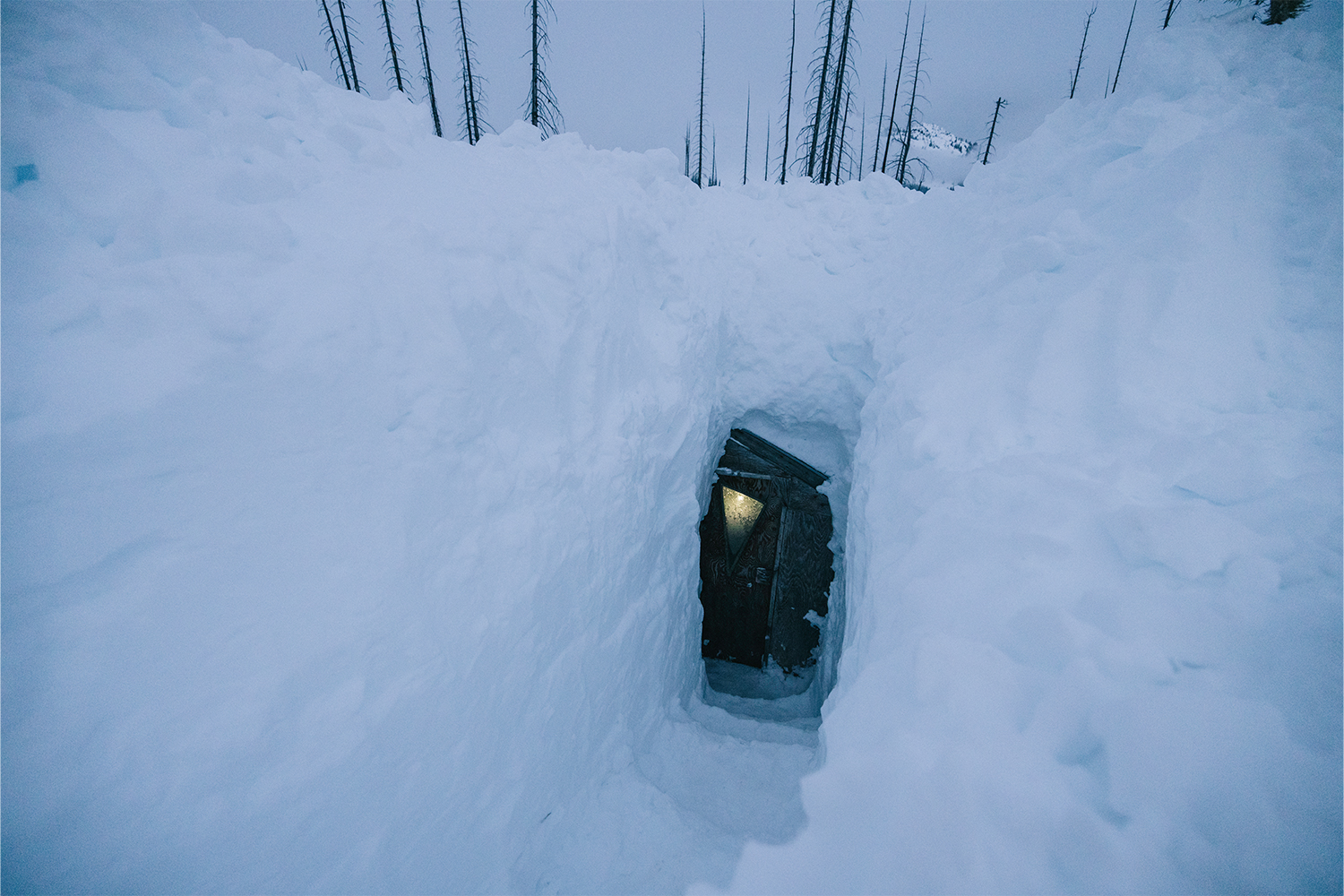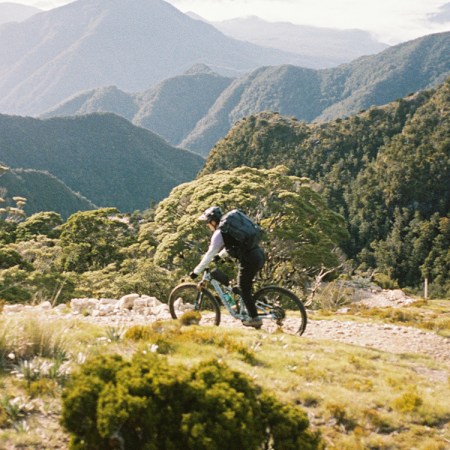
Three hours north of Boise and six south of Spokane, the little-known ranching town of Halfway, Oregon is the gateway to one of the last hidden skiing gems in the country: the Southern Wallowas.
The lesser-known mountain range garnered the nickname “the Swiss Alps of Oregon” for its jagged peaks and deep valleys, though it’s overshadowed by the Cascades to the west, the Bitterroots to the north, the Sawtooths to the east and Wasatch to the south. A full day’s drive from the coastal hubs of Seattle and Portland, the Wallowas are just remote enough to keep most skiers away, if they even know about them at all.
Despite the lack of fanfare, the skiing here is decidedly world class. The snowpack is deep, stable and light, a combination you’ll find in just a few places across the country. Access is snowmobile-only and avalanche reports are sparse, making it logistically complex. There are no gondolas or chalets. No ski patrollers or groomed runs. No crowds or lift lines. The Wallowas are rugged and gritty, which is what makes them so special.
I’ve made an annual pilgrimage to this region for a decade, staying in backcountry yurts and exploring nearby peaks. It’s become a ritual not because of what the Wallowas have, but for what they don’t — you rarely see another soul, even on multi-day trips. To give you a preview, here’s what my trip to the Wallowas’ Norway Camp was like this year.


After an early alarm, we loaded our food, beer and gear onto sleds and lashed them to our snowmobiles. We then rode nine-odd miles into the backcountry, arriving at our yurt by lunchtime. The route was slick and whooped, making the trip a challenging one, but well worth it. For the next four days we would ski-tour the nearby bowls, chutes and treed slopes, then return to the yurt to eat, toast, sleep and repeat.



Inside the yurt were simple accommodations: bunk beds, drying lines, a small wood stove upstairs, a propane stove, pots and pans and chairs for hanging out downstairs. Despite the rustic setting and simple amenities, it truly was all we needed. At night we would plan routes, fix gear, dry sweaty layers, eat hearty meals and enjoy card games with friends, before crashing early for another big day.


Near the yurt there was a small wood shed, sauna and an outhouse, which was buried six feet below the snow surface. This year the snowpack in the Wallowas was deeper than almost anywhere in the country, which opened up a lot of new terrain for us. After packing snacks, water and gear, we left the yurt on our first day, heading north to a zone called the Japanese Trees.



A north-facing swath of old growth offered a playful descent down 2,000 feet; we dodged trees and jumped off small lips like we were kids again. With good snow and no other tracks, we opted for a second lap, putting our skins back on our skis and walking back to the top, before doing it all again.



At the bottom we stopped for a late lunch, flipping a snowboard upside down to make an impromptu charcuterie board. After filling our bellies with meat and cheese, we began a slower-than-normal trek to the next valley, digesting on the way. Snow started to fall heavier in the afternoon and after one more powder lap we decided to head back to the yurt, getting in not long before sunset.



The next two days were similarly full as we explored different valleys around the yurt. To test the snow for stability, we dug pits and did column tests, assessing the layers and reactivity in the snowpack at different elevations and aspects. This continued to give us confidence, as we didn’t see negative results. The weather gradually opened up, offering better views of the big lines in the cirque around us.



On our final afternoon, we made a push towards Norway Peak and its prominent northeast face, which we could see out a window of the yurt. After skiing 3,000 feet up, we bootpacked the final stretch, as the snow changed to hard, crusty wind-board. After ripping our skins and enjoying the sunset, we dropped onto the face and slid all the way back to the yurt, making for an epic end to the trip.
Gear We Put to Good Use
WNDR Alpine Intention 108 Skis: Not knowing the exact conditions of the entire trip, I decided to bring one of the more versatile skis in my quiver, the Intention. It has plenty of float for pow turns, while being damp enough to handle big lines at speed, like our descent off Norway. And unlike other skis with this type of downhill performance, it’s also light enough to tour with all day.
Ortovox 3L Ravine Shell Jacket: Everything you want in a high-performance ski jacket: light, breathable, packable, and will keep you dry, even on the deepest days. The Ravine has a boxy cut with enough space for a puffy under it and has a great storm hood that works with most helmets, making it great for cold days. With big vents and ample pockets, even the little details are dialed in.
Mons Royale Yotei Powder Hood Long Sleeve: A technical merino base layer from a great New Zealand brand, the Yotei has kept me warm on all kinds of ski tours. It has a loose fit and is extremely comfortable, which means I never want to take it off. The hood is great for sunny days, too.
Folkrm Pahto Ski Poles: A long-grip pole that allows you to easily adapt to the terrain you are in, and a grip that’s so intuitive it’s hard to ever let go. Plus, the Pahto is easily adjustable, making it one size fits all. I’ve used my same pair for years without issues, which speaks to the durability and overall build quality, too.
All photos by Andy Cochrane
The Charge will help you move better, think clearer and stay in the game longer. Subscribe to our wellness newsletter today.




